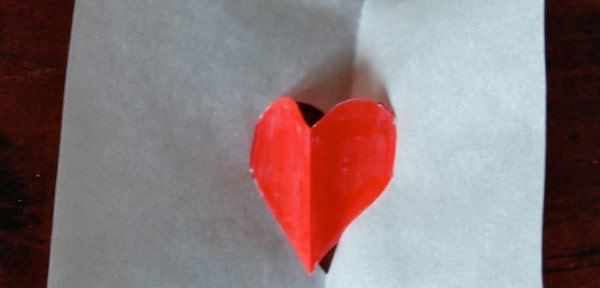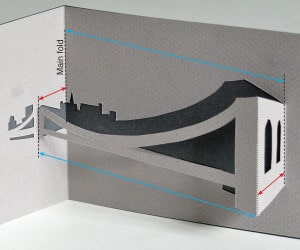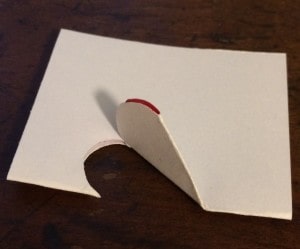Anyone can learn how to make pop-up cards by following the pattern. This tutorial will teach you how to understand popup cards so you can design your own. There are many different types of pop-ups, but to keep things from getting too complicated and long, in this tutorial I will only cover the style known as OA (for Origami Architecture) and limit myself to cards that are best viewed when opened at an angle of 90°.
Paper Engineers has many craft books to choose from, and although I have a few in the library, I find it much more helpful to learn by doing – so my first tip is to download some flashcards, make them, and then come back to read the rest of this tutorial. I recommend starting with one of these pop-ups, many of which are free.
Design and making greeting popup cards
Cuts and Folds
Heart cuts and folds copying when making a pop-up card, all folds must be straight.

Heart popup card is the easiest to make
Mountain folds look like a mountain peak and valley folds look like the bottom of a V – valley. The cuts must not be straight but must go from the top of the valet to the next valet. In this example, the blue sides must be the same length, the red distances must be equal, and (unless you want the popup to extend beyond the folded map) the yellow distance must be greater than or equal to the blue. and the green distance must be greater than or equal to the red.

Knowing about rectangular shape is basic step in design and making greeting popup cards
I call this shape a rectangle, but the result could look like the Brooklyn Bridge, a table, or a chair. The heart of the image above is also based on a rectangular shape.

You can make Brooklyn Bridge by a rectangular shape
A rectangular pop-up window is characterized by the fact that all the fold lines are parallel. When the card is opened at a 90° angle, the empty shape forms a rectangle when viewed from the side of the card (if it forms a square, this pop-up window is symmetrical, it can be folded first and then cut. fold with scissors).
In addition to these photos, you can download a 2D sketch to help you visualize designing your shape.
Symmetrical V-Folds
Triangles (aka V-Pops) can be very easy, especially if they are symmetrical, like the classic beak above or the heart on the right.
You can create a symmetrical triangle by folding a piece of paper in half, cutting a slit in the fold, and breaking any corner of your shape. When you draw it, line up the end with the main fold and draw the same corners on either side of the main fold. It’s so easy you don’t need a template; you can just draw it freehand or cut it directly without drawing anything!

Create a symmetrical triangle by folding a piece of paper in half and cut
Asymmetric Triangles
Below are two sketches that show how the Asymmetric Triangles popups work – they are much easier to understand visually than in words. The great advantage of the triangle is that it gives extra dynamism to the popup when opening and closing the map. Check out the animated photo below. The flower face could easily be silhouetted with a rectangular pop-up window. However, because it is designed with a triangle, the card tilts face down towards the flower when it is closed. Open it and the face pulls away!
So, you have finished design and making greeting popup cards. Hope this article help you.

 Tiếng Việt
Tiếng Việt
